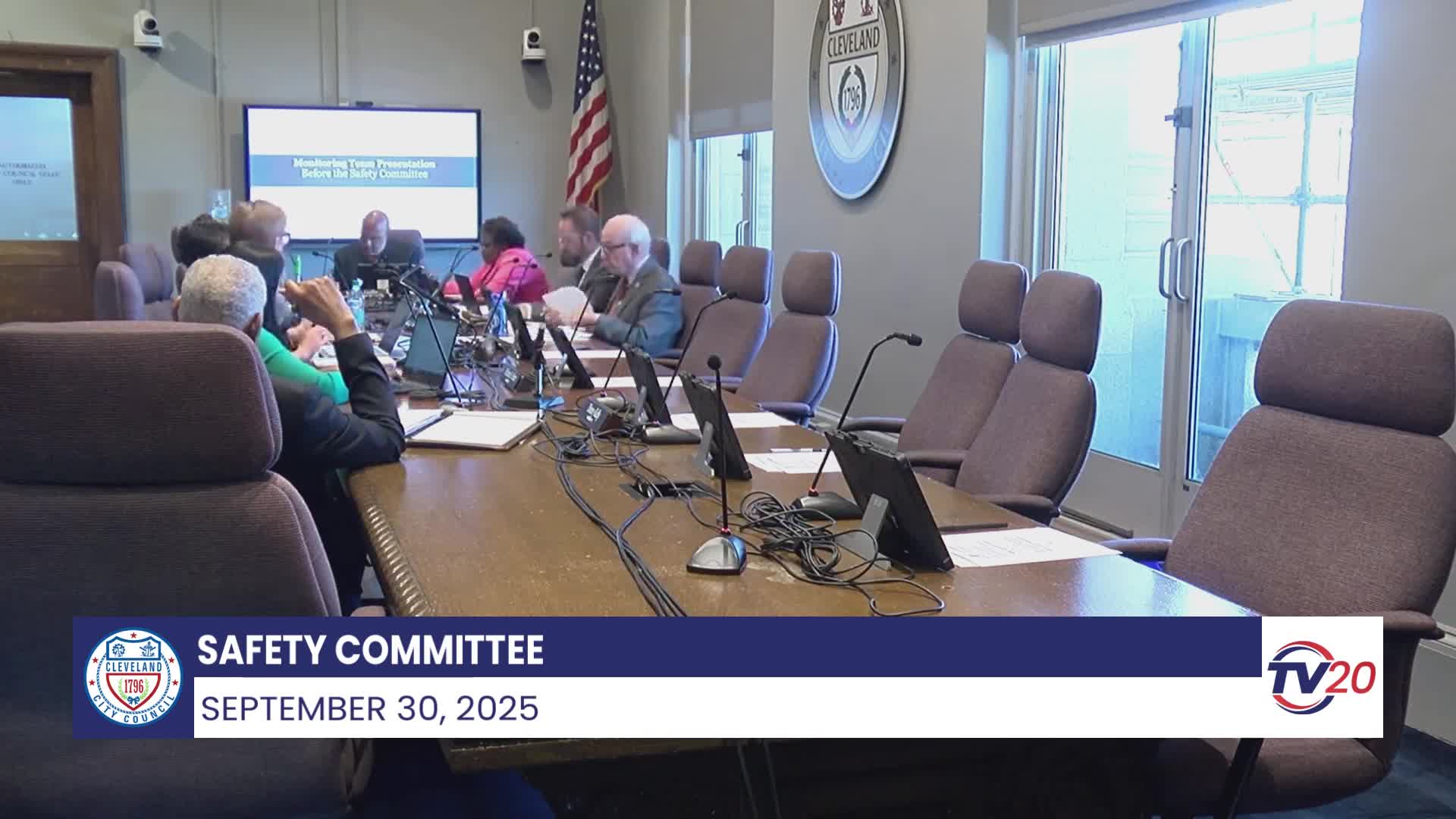Monitoring Team Reports Progress in Cleveland Police Consent Decree Compliance
September 30, 2025 | Cleveland, Cuyahoga County, Ohio
This article was created by AI summarizing key points discussed. AI makes mistakes, so for full details and context, please refer to the video of the full meeting. Please report any errors so we can fix them. Report an error »

In the heart of Cleveland's city hall, the Safety Committee convened for its seventeenth semiannual report on September 30, 2025, shedding light on the city's progress in compliance with a critical consent decree. The atmosphere was charged with anticipation as committee members prepared to present a detailed overview of their findings and ongoing efforts to enhance public safety.
The meeting began with a brief introduction, emphasizing the importance of community engagement. The committee has been actively meeting with residents to gather feedback and keep the public informed about their initiatives. This commitment to transparency is crucial as the city navigates its compliance journey, which is monitored closely by the Department of Justice.
A key focus of the presentation was the assessment of compliance across ten substantive areas outlined in the consent decree. The committee highlighted that while some areas remain in partial compliance, significant strides have been made. Notably, the crisis intervention assessment received high marks, with the city achieving either general or substantial compliance in all evaluated categories. This success reflects the city's dedication to training officers and improving interactions with individuals in crisis.
Throughout 2025, the committee has engaged in over 65 working group meetings, collaborating with various stakeholders, including the monitoring team and subject area experts. This collaborative approach has facilitated nine separate assessments covering five substantive areas of the consent decree, showcasing the city's commitment to continuous improvement.
The report also revealed a positive trend in compliance ratings, with 81 upgrades and only nine downgrades over the past two and a half years. The committee urged attendees to focus on these upgrades rather than the downgrades, emphasizing that progress is not always linear and that setbacks are part of the journey toward compliance.
As the meeting progressed, the committee outlined ongoing assessments, including those related to search and seizure practices and the use of body-worn cameras. These evaluations are crucial for ensuring that the city adheres to best practices in law enforcement and maintains the trust of its community.
In conclusion, the Safety Committee's report paints a picture of a city striving for improvement in public safety and compliance. With a strong focus on community engagement and a commitment to transparency, Cleveland is taking significant steps toward ensuring a safer environment for all its residents. The journey continues, but the progress made thus far offers a hopeful outlook for the future.
The meeting began with a brief introduction, emphasizing the importance of community engagement. The committee has been actively meeting with residents to gather feedback and keep the public informed about their initiatives. This commitment to transparency is crucial as the city navigates its compliance journey, which is monitored closely by the Department of Justice.
A key focus of the presentation was the assessment of compliance across ten substantive areas outlined in the consent decree. The committee highlighted that while some areas remain in partial compliance, significant strides have been made. Notably, the crisis intervention assessment received high marks, with the city achieving either general or substantial compliance in all evaluated categories. This success reflects the city's dedication to training officers and improving interactions with individuals in crisis.
Throughout 2025, the committee has engaged in over 65 working group meetings, collaborating with various stakeholders, including the monitoring team and subject area experts. This collaborative approach has facilitated nine separate assessments covering five substantive areas of the consent decree, showcasing the city's commitment to continuous improvement.
The report also revealed a positive trend in compliance ratings, with 81 upgrades and only nine downgrades over the past two and a half years. The committee urged attendees to focus on these upgrades rather than the downgrades, emphasizing that progress is not always linear and that setbacks are part of the journey toward compliance.
As the meeting progressed, the committee outlined ongoing assessments, including those related to search and seizure practices and the use of body-worn cameras. These evaluations are crucial for ensuring that the city adheres to best practices in law enforcement and maintains the trust of its community.
In conclusion, the Safety Committee's report paints a picture of a city striving for improvement in public safety and compliance. With a strong focus on community engagement and a commitment to transparency, Cleveland is taking significant steps toward ensuring a safer environment for all its residents. The journey continues, but the progress made thus far offers a hopeful outlook for the future.
View full meeting
This article is based on a recent meeting—watch the full video and explore the complete transcript for deeper insights into the discussion.
View full meeting
